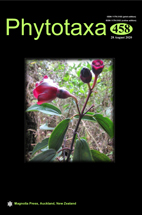Abstract
The present study provides novel information about the pollen of Salvia assurgens. Pollen grains were collected and described based on their observed characters by light microscope and scanning electron microscopy. The species is distinguished from other Mexican salvias by having small pollen grains (14.2 × 18.2 µm), thin primary muri (0.2 µm thick), elongated primary lumina (1.03 µm long) and secondary lumina with relatively few perforations (9, range 5–14). Pollen characters are similar to those of the majority of American salvias. Regarding Mexican sages, there has been little palynological research, and only 23 species of 32 examined have been quantitatively studied. Standardization is needed in different aspects of palynological studies, especially in relation to measurement protocols and data analysis, as well as the increased use of scanning electron microscopy (SEM), since the majority of differences among species are provided by SEM microscope observation.

